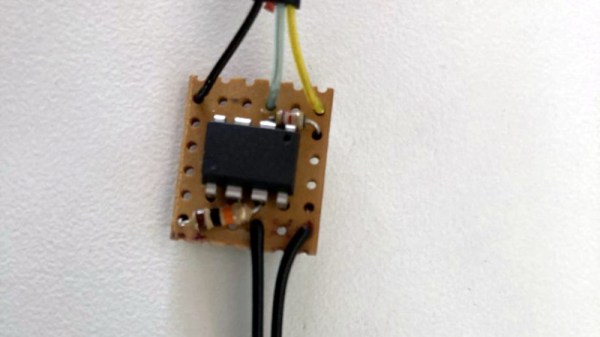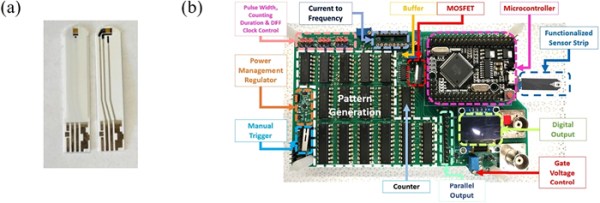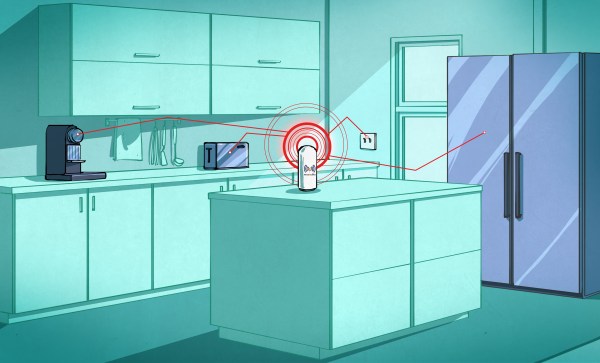When all else fails, blame it on the cloud? It seems like that’s the script for just about every outage that makes the news lately, like the Wyze camera outage this week that kept people from seeing feeds from their cameras for several hours. The outage went so far that some users’ cameras weren’t even showing up in the Wyze app, and there were even reports that some people were seeing thumbnails for cameras they don’t own. That’s troubling, of course, and Wyze seems to have taken action on that quickly by disabling a tab on the app that would potentially have let people tap into camera feeds they had no business seeing. Still, it looks like curiosity got the better of some users, with 1,500 tapping through when notified of motion events and seeing other people walking around inside unknown houses. The problem was resolved quickly, with blame laid on an “AWS partner” even though there were no known AWS issues at the time of the outage. We’ve said it before and we’ll say it again: security cameras, especially mission-critical ones, have no business being connected with anything but Ethernet or coax, and exposing them to the cloud is a really, really bad idea.
A Smarter Solar Water Heater
Installing solar power at a home is a great way to reduce electricity bills, especially as the cost of solar panels and their associated electronics continue to plummet. Not every utility allows selling solar back to the grid, though, so if you’re like [Rogan] who lives in South Africa you’ll need to come up with some clever tricks to use the solar energy each day while it’s available to keep from wasting any. He’s devised this system for his water heater that takes care of some of this excess incoming energy.
A normal water heater, at least one based on electric resistive heaters, attempts to maintain a small range of temperatures within the insulated tank. If the temperature drops due to use or loss to the environment, the heaters turn on to bring the temperature back up. This automation system does essentially the same thing, but allows a much wider range of temperatures depending on the time of day. Essentially, it allows the water heater to get much hotter during times when solar energy is available, and lets it drop to lower values before running the heater on utility electricity during times when it isn’t. Using a combination ESP32 and ATtiny to both control the heater and report its temperature, all that’s left is to program Home Assistant to get the new system to interact with the solar system’s battery charge state and available incoming solar energy.
While it’s an elegantly simple system that also affords ample hot water for morning showers, large efficiency gains like this can be low-hanging fruit to even more home energy savings than solar alone provides on paper. Effectively the water heater becomes another type of battery in [Rogan]’s home, capable of storing energy at least for the day in the form of hot water. There are a few other ways of storing excess renewable energy as well, although they might require more resources than are typically available at home.
Apple AirTag: Antitheft Or Antistalking?
Occasionally, the extra features added to a product can negate some of the reasons you wanted to buy the thing in the first place. Take, for example, Apple’s AirTag — billed as an affordable way to link your physical stuff to your phone. If some light-fingered ne’er-do-well wanders by and half-inches your gear, you get notified. The thing is, the AirTag also has an anti-stalking measure, which after a while, notifies nearby iPhones, should the tag move but not be near your iPhone!
In a recent video, [David Manning] explains that this feature is great for preventing the device from being used to track people. But it also means that if said thief happens to own an iPhone, they will be notified of the nearby tag, and can find it and disable it. So in the end, it’s a bit less useful as an anti-theft measure!
The solution is to pop the back off the tag and yank out the little sounder module from the rear plastic. You lose the ability to locate the tag audibly, but you gain a little more chance of returning your stolen goods. Apple could easily remove this feature with a firmware update, but it’s a matter of picking your poison: antistalking or antitheft?
The ELIZA Archaeology Project: Uncovering The Original ELIZA
Since ELIZA was created by [Joseph Weizenbaum] in the 1960s, its success had led to many variations and ports being written over the intervening decades. The goal of the ELIZA Archaeology Project by Stanford, USC, Oxford and other university teams is to explore and uncover as much of this history as possible, starting with the original 1960s code. As noted in a recent blog post by [Anthony Hay], most of the intervening ‘ELIZA’ versions seem to have been more inspired by the original rather than accurate replicas or extensions of the original. This raises the question of what the original program really looked like, a question which wasn’t answered until 2020 when the original source code was rediscovered. Continue reading “The ELIZA Archaeology Project: Uncovering The Original ELIZA”
Car Driving Simulators For Students, Or: When Simulators Make Sense
There are many benefits to learning to fly an airplane, drive a racing car, or operate some complex piece of machinery. Ideally, you’d do so in a perfectly safe environment, even when the instructor decides to flip on a number of disaster options and you find your method of transportation careening towards the ground, or the refinery column you’re monitoring indicating that it’s mere seconds away from going critical and wiping out itself and half the refinery with it.
Still, we send inexperienced drivers in cars onto the roads each day as they either work towards getting their driving license, or have passed their driving exam and are working towards gaining experience. It is this inexperience with dangerous situations and tendency to underestimate them which is among the primary factors why new teenage drivers are much more likely to end up in crashes, with the 16-19 age group having a fatal crash nearly three times as high as drivers aged 20 and up.
After an initial surge in car driving simulators being used for students during the 1950s and 1960s, it now appears that we might see them return in a modern format.
Continue reading “Car Driving Simulators For Students, Or: When Simulators Make Sense”
Low-Cost Saliva-based Biosensor For Cancer Detection
More and more biomarkers that can help in the early diagnosis of diseases like cancer are being discovered every year, but often the effective application relies on having diagnostic methods that are both affordable and as least invasive as possible. This is definitely true in the case of breast cancers, where the standard diagnostic method after seeing something ‘odd’ on a scan is to perform a biopsy so that a tissue sample can be tested in a laboratory. What [Hsiao-Hsuan Wan] and colleagues demonstrate in a recently published research article in the Journal of Vacuum Science & Technology B is a way to use saliva on disposable test strips to detect the presence of cancer-related biomarkers. Best of all, the system could be very affordable.
The two biomarkers tested in this experiment are HER2 (in 10 – 30% of breast cancer cases) and CA 15-3, both of which are indicative of a variety of cancers, including breast cancers. According to the researchers, the levels of these biomarkers in saliva can be correlated to those in blood serum. Where other biosensors may include the read-out circuitry – making those disposable and expensive – here the disposable part is the test strips which are plated with electrodes.
Continue reading “Low-Cost Saliva-based Biosensor For Cancer Detection”
Wireless All The Things!
Neither Tom Nardi nor I are exactly young anymore, and we can both remember a time when joysticks were actually connected with wires to the computer or console, for instance. Back then, even though wireless options were on the market, you’d still want the wired version if it was a reaction-speed game, because wireless links just used to be too slow.
Somehow, in the intervening years, and although we never even really noticed the transition as such, everything has become wireless. And that includes our own hacker projects. Sure, the ESP8266 and other WiFi-capable chips made a big difference, but I still have a soft spot in my heart for the nRF24 chipset, which made at least point-to-point wireless affordable and easy. Others will feel the same about ZigBee, but the point stands: nothing has wires anymore, except to charge back up.
The reason? As this experiment comparing the latency of many different wireless connections bears out, wireless data links have just gotten that good, to the point that the latency in the radio is on par with what you’d get over USB. And the relevant software ecosystems have made it easier to go wireless as well. Except for the extra power requirement, and for cases where you need to move a lot of data, there’s almost no reason that any of your devices need wires anymore.
Are you with us? Will you throw down your chains and go wireless?


















